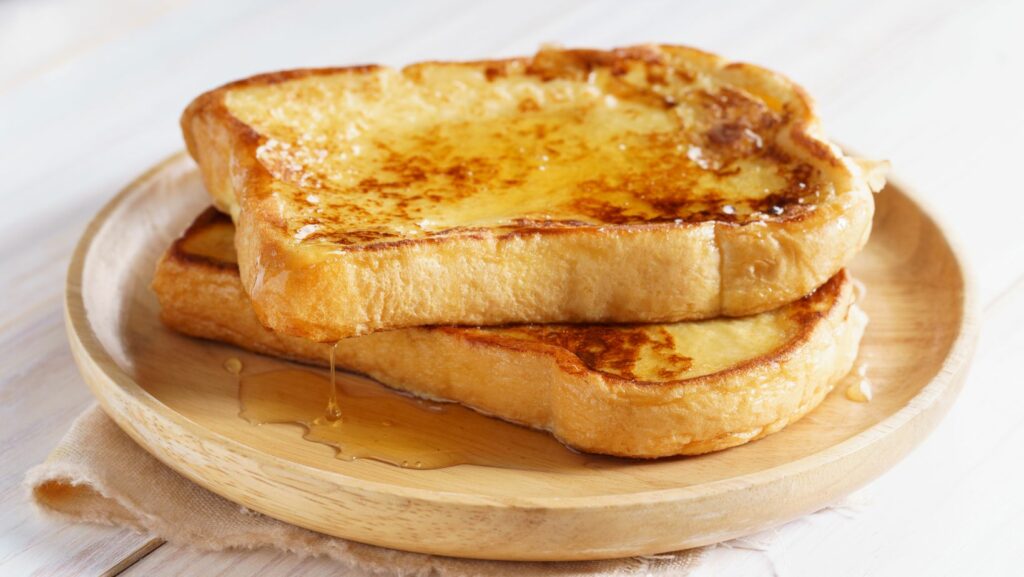What bread to use for French toast? Look no further, as I have some insights to share. When creating the perfect French toast, choosing the right bread is crucial. The ideal bread should absorb the egg mixture without turning mushy or falling apart.
One of the best options for French toast is brioche. Its rich and buttery texture adds a delightful flavor to each bite. With its slightly sweet taste and sturdy structure, Challah is also an excellent choice. Both brioche and Challah have a dense crumb that can hold well when soaked in the egg mixture.
Consider using a baguette or ciabatta if you prefer a lighter and fluffier French toast. These types of bread have a more open crumb structure, resulting in a crispier exterior while maintaining a soft center.
Whole wheat or whole grain bread can be used for a healthier twist on traditional French toast. Their nutty flavor and denser texture add an interesting dimension to this classic breakfast dish.
Ultimately, the choice of bread for your French toast depends on personal preference. Experimenting with different types of bread will allow you to find your favorite combination of flavors and textures. So get creative in the kitchen, and enjoy delicious homemade French toast!
What Bread to Use for French Toast
When making a delicious batch of French toast, the choice of bread plays a crucial role in determining the taste and texture of this classic breakfast dish. With so many options available, deciding which bread is best suited for creating that perfect golden and fluffy slice can be overwhelming.

Here are some factors to consider when choosing the right bread for your French toast:
1. Thickness: Opt for thick slices to soak the custard mixture without becoming overly soggy. Thin slices may hold up poorly during cooking, resulting in a mushy texture.
2. Sturdiness: Look for a loaf of bread with enough structure to withstand dipping and flipping without falling apart. A sturdy bread will maintain its shape during cooking, giving you a crispy exterior while retaining a soft interior.
3. Texture: Aim for bread with a slightly dense and chewy texture for traditional French toast. This helps to contrast each slice’s crisp outer layer and tender center.
4. Flavor: Choose bread with flavors that complement or enhance your desired taste profile. Classic choices include brioche, challah, or even day-old baguettes, which offer a rich flavor that pairs well with buttery toppings and sweet syrups.
5. Freshness: While stale bread is often recommended for French toast due to its ability to absorb more liquid without getting too soggy, fresh bread can also yield excellent results if handled properly. Ensure it’s not overly soft or fluffy, as it may disintegrate during cooking.
Final Thoughts
Ultimately, selecting the right type of bread boils down to personal preference and desired outcome. Experimenting with different varieties, such as whole wheat or cinnamon raisin, can add exciting twists to your French toast recipe.
Remember, whether you prefer thick slices of brioche or crusty baguette pieces, the key to a perfect French toast is finding a bread that can withstand the soaking and cooking process while offering a delightful combination of flavors and textures. So explore the world of bread options to create your unique and mouthwatering French toast masterpiece!









